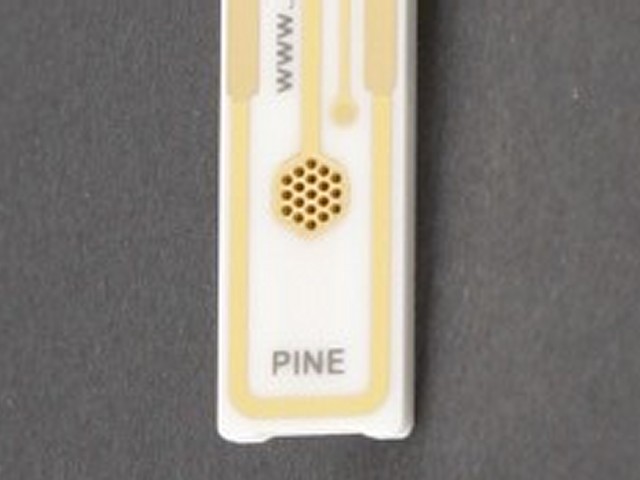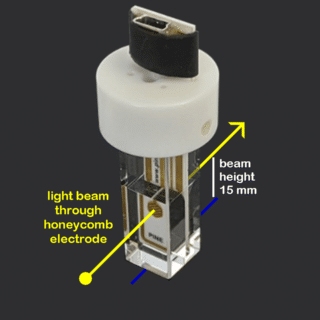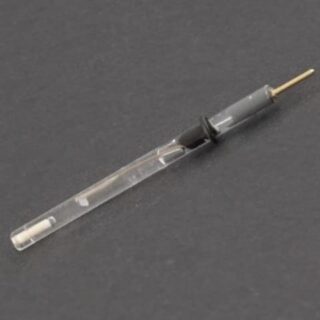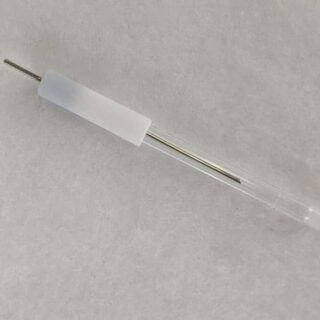Honeycomb Spectroelecrochemical Electrode – Gold (Au)
Each honeycomb spectroelectrochemical electrode card is a complete three-electrode cell (working, counter and reference* electrode). The three electrodes are screen-printed (using a conductive gold ink) on to a rugged ceramic substrate. The working electrode is perforated with a honeycomb pattern of holes which allow light to pass through the electrode. The active surface of the working electrode includes a metal coating along the inner walls of the holes. As light passes through the holes, the beam grazes the walls of each hole, meaning that the light is passing through the diffusion layer along the walls of each hole. As a result, this cell has an effective optical path length comparable to the thickness of the honeycomb card (1.7 mm). This long path length allows redox-active species with low extinction coefficients to be more easily detected as they are generated (or consumed) along the walls of each hole. *The reference electrode spot on the card is a metal surface (gold) which users can choose to electroplate with silver and/or silver chloride to create a reference electrode; however, most users instead choose to use an independent LowProfile reference electrodes in conjunction with our Honeycomb Spectroelectrochemistry Cell Kit.
Customers must be logged into their account to view prices. Not all regions provide pricing online. If you do not see prices, you can obtain them from the designated sales channel in your region.






